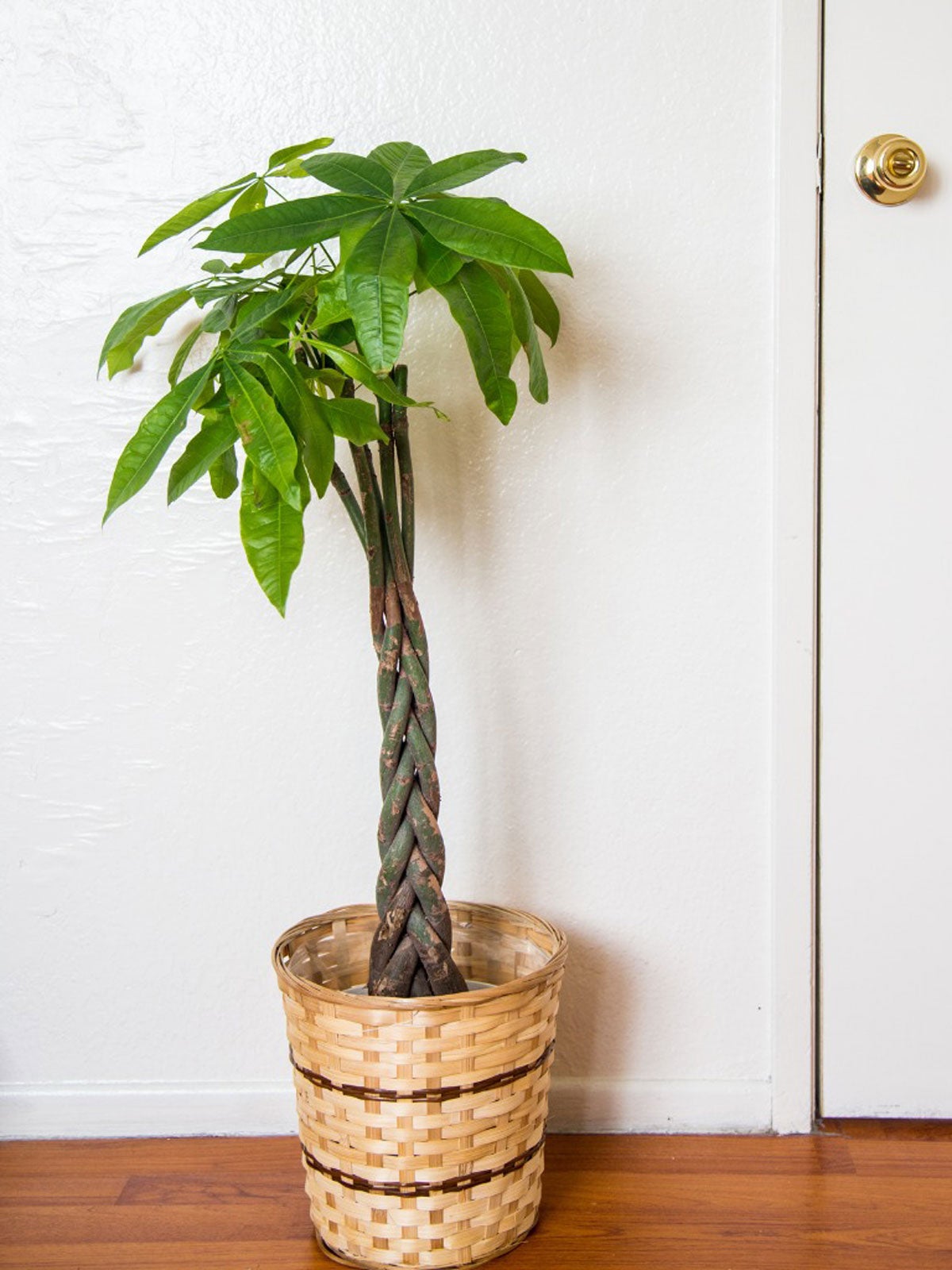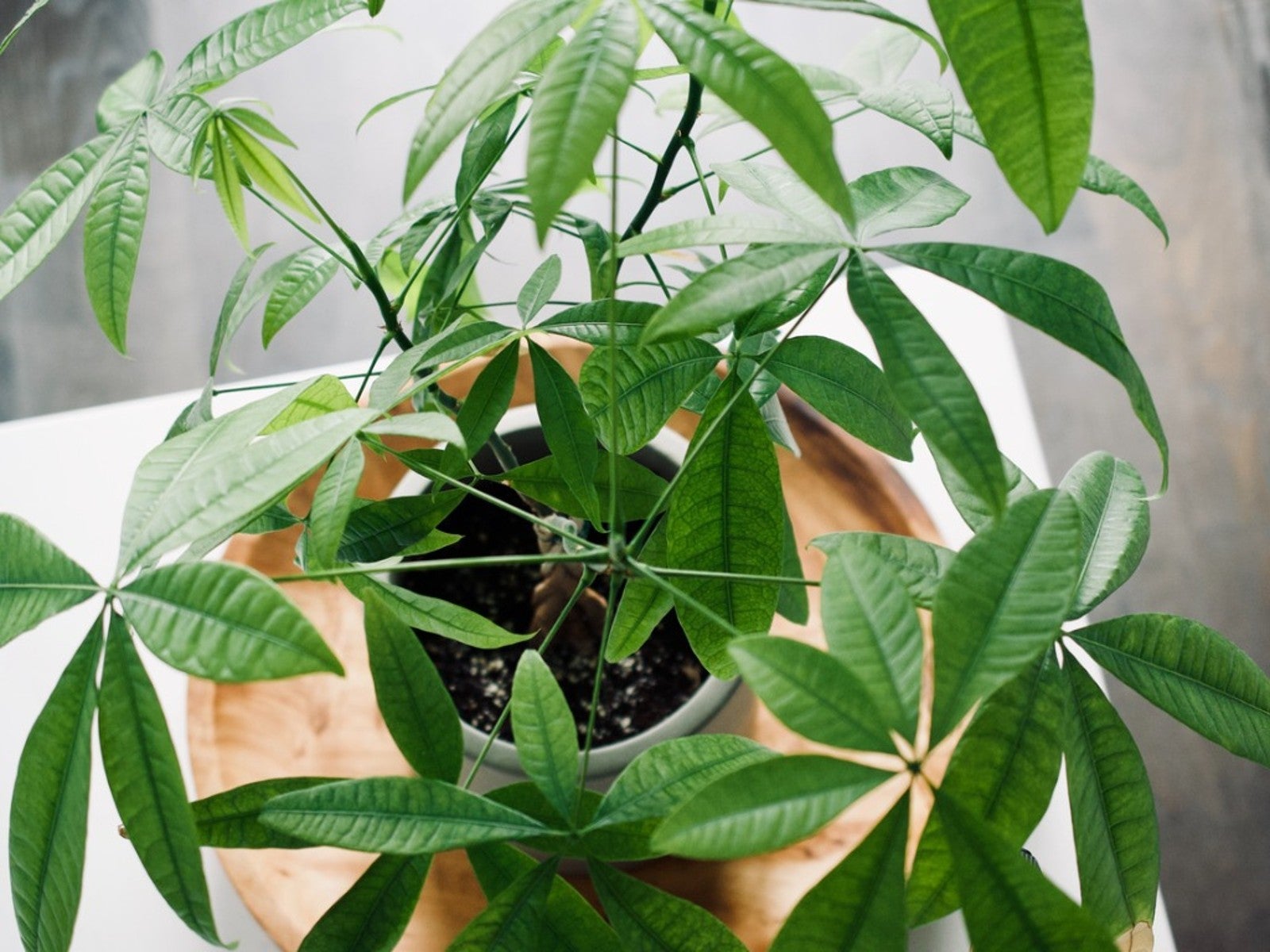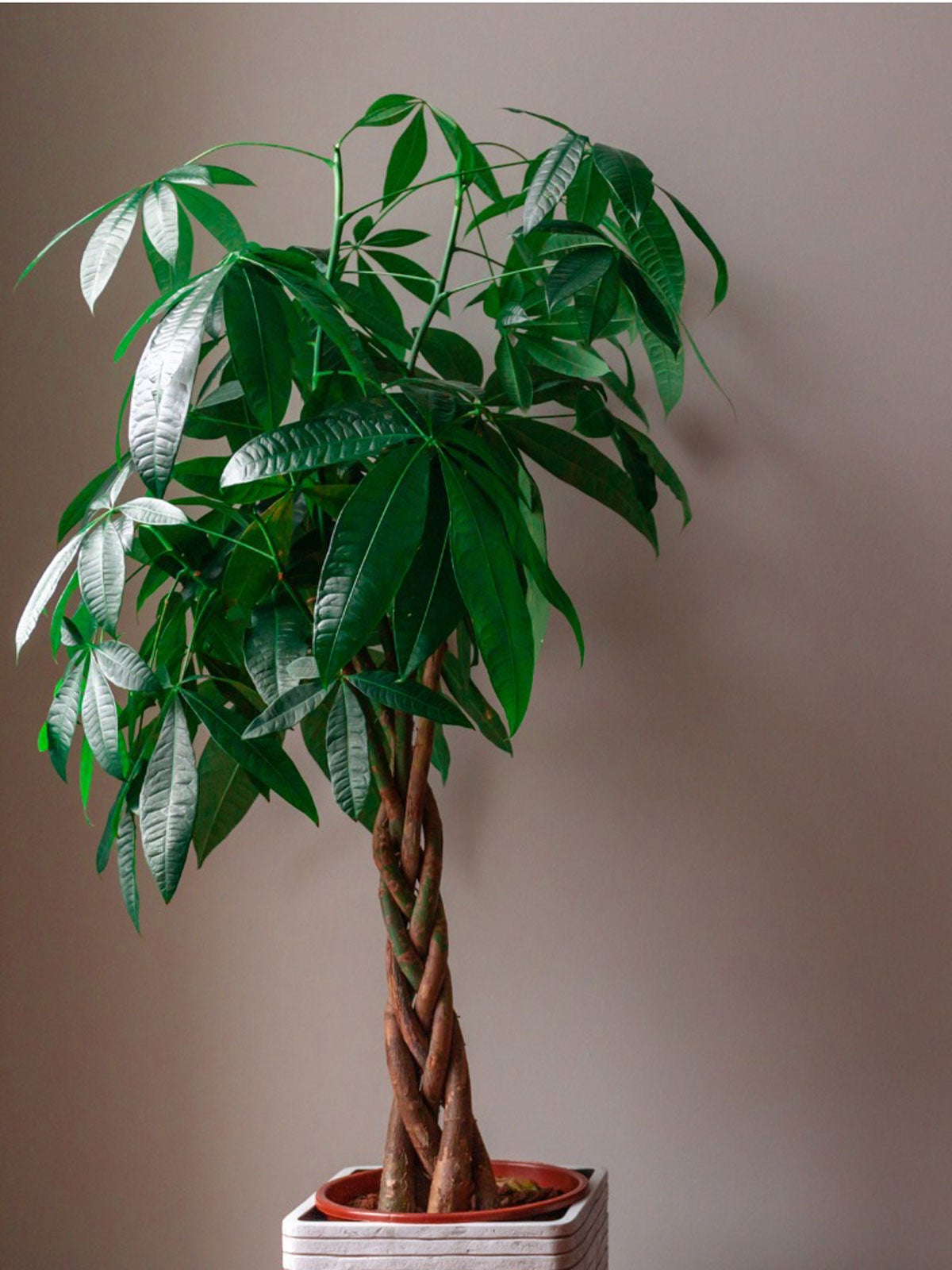Money Tree Propagation – How To Propagate Pachira Trees


Money tree plants (Pachira aquatica) do not come with any guarantees about future wealth, but they are popular, nonetheless. These broadleaf evergreens are native to the swamps of Central and South America and can only be cultivated outdoors in very warm climates. One way to get more money trees is by learning to propagate these Pachira plants.
Propagating money trees isn’t difficult if you follow a few guidelines. If you are interested in learning about money tree propagation, read on.
About Money Tree Reproduction
Money trees get their catchy nickname from a feng shui belief that the tree is lucky as well as a legend that cultivating the plant brings great fortune. The young trees have flexible trunks that are often braided together to “lock in” the financial luck.
While those living in USDA plant hardiness zones 10 and 11 can plant these trees in the back yard and watch them shoot up to 60 feet (18 m.) tall, the rest of us use them as indoor houseplants. They are quite easy to maintain, and it is also fairly easy to propagate Pachira plants.
If you have one money tree, you can easily get more for free by learning about money tree propagation. Once you understand how to propagate a money tree, there is no limit to the number of trees you can grow.
In the wild, money tree reproduction is like that of most plants, a matter of fertilized flowers producing fruit that contain seeds. This is quite a spectacular show since the blooms are 14 inch long (35 cm.) flower buds that open as cream-colored petals with a 4 inch (10 cm.) long, red-tipped stamen.
The blooms release fragrance at night then develops into huge oval seed pods like coconuts, containing tightly packed nuts. They are edible when they are roasted, but those that are planted produce new trees.
Gardening tips, videos, info and more delivered right to your inbox!
Sign up for the Gardening Know How newsletter today and receive a free copy of our e-book "How to Grow Delicious Tomatoes".
How to Propagate a Money Tree
Planting a seed is not the easiest way to start propagating money trees, especially if the money tree in question is a houseplant. It is fairly rare for a container money tree to produce flowers, let alone fruit. How to propagate a money tree then? The easiest way to accomplish money tree propagation is through cuttings.
Take a 6 inch (15 cm.) branch cutting with several leaf nodes and snip off the leaves on the lower third of the cutting, then dip the cut end in rooting hormone.
Prepare a small pot of soilless medium like coarse sand, then push the cut end of the cutting into it until the lower third of it is below the surface.
Water the soil and cover the cutting with a plastic bag to hold in humidity. Keep the cutting medium moist.
It may take six to eight weeks before the cutting roots and another few months before the small money tree can be transplanted into a larger container.

Teo Spengler is a master gardener and a docent at the San Francisco Botanical Garden, where she hosts public tours. She has studied horticulture and written about nature, trees, plants, and gardening for more than two decades. Her extended family includes some 30 houseplants and hundreds of outdoor plants, including 250 trees, which are her main passion. Spengler currently splits her life between San Francisco and the French Basque Country, though she was raised in Alaska, giving her experience of gardening in a range of climates.
-
 Try The Trend – Turn Any Bed Into A Keyhole Garden With This Clever In-Ground Composter
Try The Trend – Turn Any Bed Into A Keyhole Garden With This Clever In-Ground ComposterKeyhole gardening is an efficient and sustainable practice that saves space. Get started on this DIY project quickly and easily with an in-ground composter.
By Bonnie L. Grant
-
 4 Superfast Composting Methods: Turn Waste Into Garden Gold In 30 Days Or Less
4 Superfast Composting Methods: Turn Waste Into Garden Gold In 30 Days Or LessTry the fastest composting methods to turbocharge your pile and transform kitchen scraps and garden waste into finished compost in just a few weeks.
By Mary Ellen Ellis
-
 How To Prune A Money Tree Houseplant
How To Prune A Money Tree HouseplantRead the best ways to prune a money plant to keep it healthy and tidy.
By Mary Ellen Ellis
-
 Money Tree Plant Care: Tips On Growing A Money Tree Houseplant
Money Tree Plant Care: Tips On Growing A Money Tree HouseplantPachira aquatica is a commonly found houseplant called a money tree. Money tree plant care is easy and based upon just a few specific conditions. Learn what those are in this article.
By Bonnie L. Grant